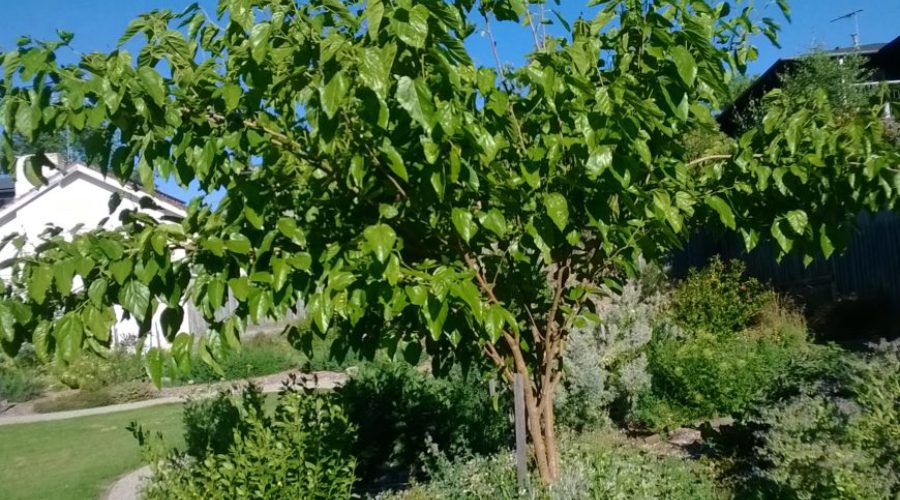Black Mulberry
Plant text by Naomi Lacey, photo by Russ Grayson
Common name: Black Mulberry
Scientific name: Morus nigra
Family, and related species: Moraceae
Description including form (tree, climber, etc), other similar species
In the tropics, this tree tends more towards being a spindly shrub that can grow up to about 4m in height. The 10-20cm long leaves are dark green and have a rough surface with very short, stiff hairs on top. The dark purple fruits are 2-3cm long and they can fruit year-round in the tropics. The tree is deciduous.
Role/ characteristics/ use in permaculture
Edible fruit that makes delicious jams, pies, wine, and syrups is also loved by birds and chooks.
Makes a good windbreak.
Leaves and stems from cutting back the tree after fruiting makes excellent mulch and compost.
Silkworms can be cultivated as mulberry leaves are their one and only food source.
Ecology and habitat requirements
Needs full sun and prefers a well-drained soil. Will tolerate frosts and poor soils and does quite well without regular feeding. It is a very hardy tree. Grows in most climates and is resistant to both drought and wind.
In the tropics, it can be favoured by mastoterme termites but will continue to grow and fruit even with the termites eating through them.
Access to plants
Cultivated easily from cuttings of last year’s growth. Branches can also be anchored to the ground with a brick or rock where they will sprout roots. The branch can then be cut and the new plant gently dug out and replanted.
Available in most nurseries in Darwin.
References
Norrington, Leonie, 2001, Tropical Food Gardens: A guide to growing fruit, herbs and vegetables, Bloomings Books, Melbourne, Australia
Wikipedia, 2014, Morus nigra
Botanical.com A Modern Herbal, Mulberry, common
California Rare Fruit Growers, 1997, Mulberry.

